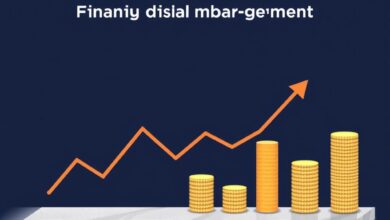How to achieve financial independence on an average income

Establish a robust savings plan that prioritizes building passive income streams. Allocate at least 20% of your earnings towards investments and savings each month. This disciplined approach ensures that your financial foundation grows steadily, even on a modest salary.
Embrace the FIRE (Financial Independence, Retire Early) movement by focusing on reducing unnecessary expenses. Create a budget that reflects your goals and eliminates frivolous spending. Redirect those funds into high-yield savings accounts or diversified investment portfolios, which will compound your wealth over time.
Consider real estate or dividend-producing assets as avenues for generating passive income. These options not only provide additional cash flow but also enhance your overall financial security. By reinvesting earnings, you can accelerate the growth of your wealth while enjoying the freedom that comes with financial stability.
Budgeting Techniques for Savings
Implement the 50/30/20 rule: allocate 50% of your budget to needs, 30% to wants, and 20% to savings. This structure fosters a disciplined approach to managing finances while ensuring you have sufficient funds for both essentials and personal enjoyment.
Create a zero-based budget, where every dollar is assigned a specific purpose. At the end of each month, ensure that your income minus expenses equals zero. This method can help identify unnecessary expenditures and redirect those funds into a savings plan or investment opportunities.
Consider using the envelope system for discretionary spending. Allocate cash for various categories such as groceries, entertainment, and dining out. Once the cash runs out in an envelope, you cannot spend more in that category until the next budget period begins. This technique curtails overspending and reinforces conscious financial choices.
Track expenses meticulously with budgeting apps or spreadsheets. Regular monitoring reveals spending patterns and highlights areas for potential savings. Establishing this habit can contribute significantly to accumulating passive income over time through investments or savings accounts.
Set specific savings goals tied to short-term and long-term objectives, whether it’s building an emergency fund or planning for early retirement (FIRE). Break these goals down into achievable monthly targets to maintain motivation and focus on your financial journey.
Automate savings transfers from checking to savings accounts immediately after receiving income. Automating this process reduces temptation to spend what should be saved, ensuring consistent growth of your savings portfolio.
Regularly review and adjust your budget based on changing circumstances or financial goals. Life events like job changes or significant purchases can impact your financial situation; staying flexible allows you to adapt without derailing progress towards saving aspirations.
Maximizing Income Through Side Hustles
Consider investing time in a side hustle that aligns with your skills and interests. Freelancing platforms like Upwork or Fiverr allow you to offer services ranging from graphic design to writing, generating additional cash flow. This not only boosts your budget but can also lead to passive income if you create digital products like e-books or online courses.
Explore the gig economy. Driving for rideshare companies or delivering food through apps can provide flexible hours and quick earnings. Use earnings from these ventures to fund investments, bringing you closer to early retirement and financial freedom.
Real estate offers another avenue. Consider house hacking; rent out a room or invest in a multi-family property. The rental income can cover mortgage payments, creating a sustainable stream of passive revenue while building equity in an asset.
Leverage your hobbies. If you’re skilled at crafts, platforms like Etsy enable you to monetize creativity. Alternatively, blogging about your passions can attract sponsorships or affiliate marketing opportunities, transforming leisure activities into profitable endeavors.
Finally, allocate time weekly for research on new side hustles. Analyze trends and demands in the market; this proactive approach ensures that your additional streams remain relevant and lucrative while enhancing overall wealth-building strategies.
Investing Basics for Beginners
Establish a savings plan that allocates a portion of your income to investment accounts. Aim for at least 15% of your earnings to boost your wealth over time. Start by setting up an emergency fund, covering three to six months of living expenses, before venturing into investing.
Consider low-cost index funds or exchange-traded funds (ETFs) as your entry point into the market. These options provide diversification and minimize risks compared to individual stocks. Investing in such funds can help you generate passive income through dividends and capital appreciation.
Utilize dollar-cost averaging: invest a fixed amount regularly, regardless of market conditions. This strategy reduces the impact of volatility and enables you to accumulate shares at varying prices, ultimately lowering your average cost per share.
Explore retirement accounts like IRAs or 401(k)s that offer tax advantages. Contributing to these accounts not only secures your future but also enhances your potential for long-term growth.
Stay informed about market trends without getting overwhelmed. Use reputable financial news sources and educational platforms to sharpen your understanding. Avoid emotional decisions driven by fear or greed; stick to your strategy and adjust only when necessary.
Aim for freedom from financial stress by continuously reinvesting returns. The power of compounding can significantly amplify your investments over time, creating a robust foundation for long-lasting wealth.
Finally, set clear financial goals: whether it’s early retirement or funding a dream project, knowing what you’re working towards will keep you motivated on the path to building substantial resources.
Debt Management Strategies Explained
Prioritize creating a detailed budget to track expenses and identify unnecessary costs. This forms the basis for effective debt management.
- Snowball Method: Focus on paying off the smallest debts first. Once cleared, redirect those payments to the next smallest. This builds momentum and motivation.
- Avalanche Method: Target high-interest debts first. This minimizes total interest paid over time, ultimately maximizing savings.
- Consolidation: Combine multiple debts into one loan with a lower interest rate. This simplifies payments and can reduce monthly obligations.
Create a realistic savings plan that allocates a portion of your income toward an emergency fund. Aim for three to six months’ worth of expenses to provide financial freedom during unexpected situations.
- Evaluate current debts and categorize them based on priority.
- Select a management strategy that aligns with your financial habits.
- Adjust your budget to accommodate larger payments toward prioritized debts.
Regularly review your progress. Adjustments may be necessary as circumstances change; flexibility is key in maintaining control over finances.
- Avoid New Debt: Resist the urge to accumulate additional liabilities while managing existing ones. Focus on reducing what you owe before considering new expenses.
- Negotiate Terms: Contact creditors to discuss lower interest rates or payment plans if needed. Many are willing to work with you, especially if they see commitment to repayment.
The road to true financial freedom lies in disciplined debt management and consistent saving strategies. By adhering to these principles, you enhance your ability to invest in future opportunities rather than being weighed down by past obligations.
Long-Term Financial Goal Setting
Establish a clear savings plan that outlines specific targets for both short-term and long-term objectives. For instance, set a goal to save 20% of your monthly earnings towards retirement or an emergency fund. This percentage can significantly impact your future freedom.
Utilize the SMART criteria–Specific, Measurable, Achievable, Relevant, Time-bound–to design your financial goals. Instead of vague aspirations, define them precisely: “Save $30,000 for a home down payment in five years.” This clarity enhances motivation and accountability.
Create a budget that reflects these goals. Allocate funds accordingly to ensure you prioritize saving while managing daily expenses. Regularly review this budget to adapt to changes in income or unexpected costs.
Incorporate milestones within your savings plan. Celebrate small victories when reaching each milestone, such as hitting the first $5,000 saved. This keeps morale high and reinforces commitment.
Consider the FIRE (Financial Independence, Retire Early) movement as inspiration. Research various strategies employed by others who have successfully attained their financial objectives ahead of schedule; adapt those strategies that resonate with you into your plan.
Track progress diligently using apps or spreadsheets. Monitoring allows for adjustments when necessary and helps maintain focus on the ultimate vision of freedom through disciplined saving and budgeting.







